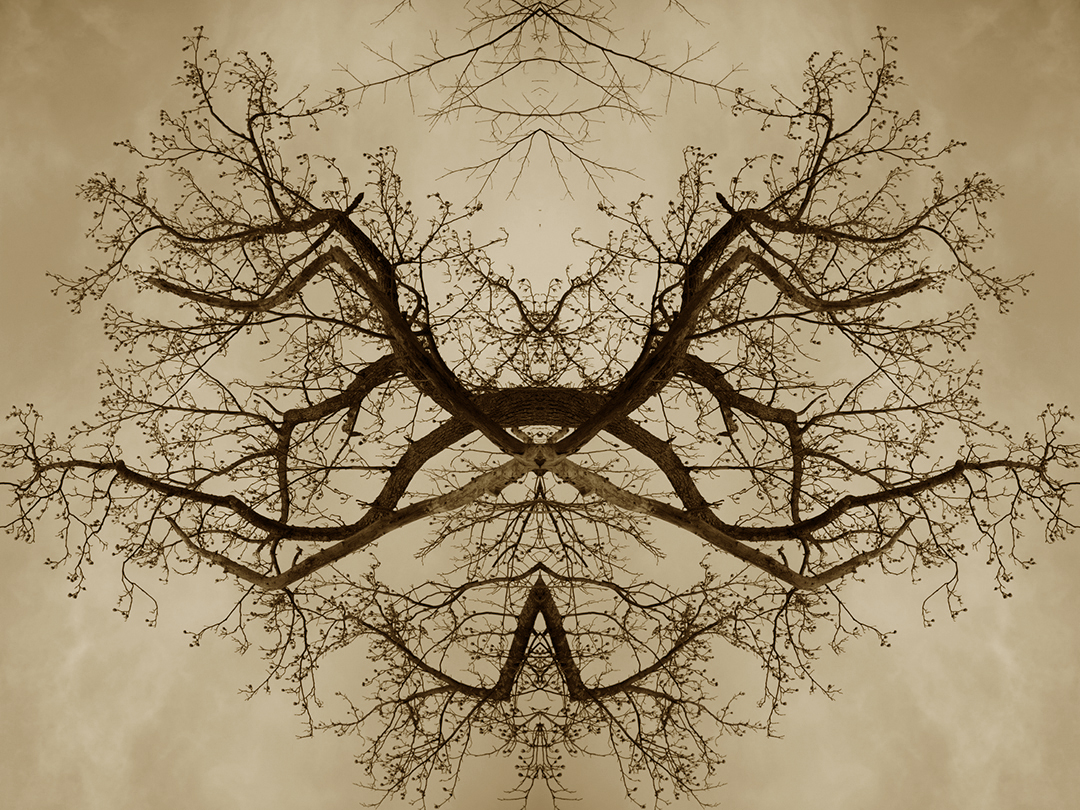
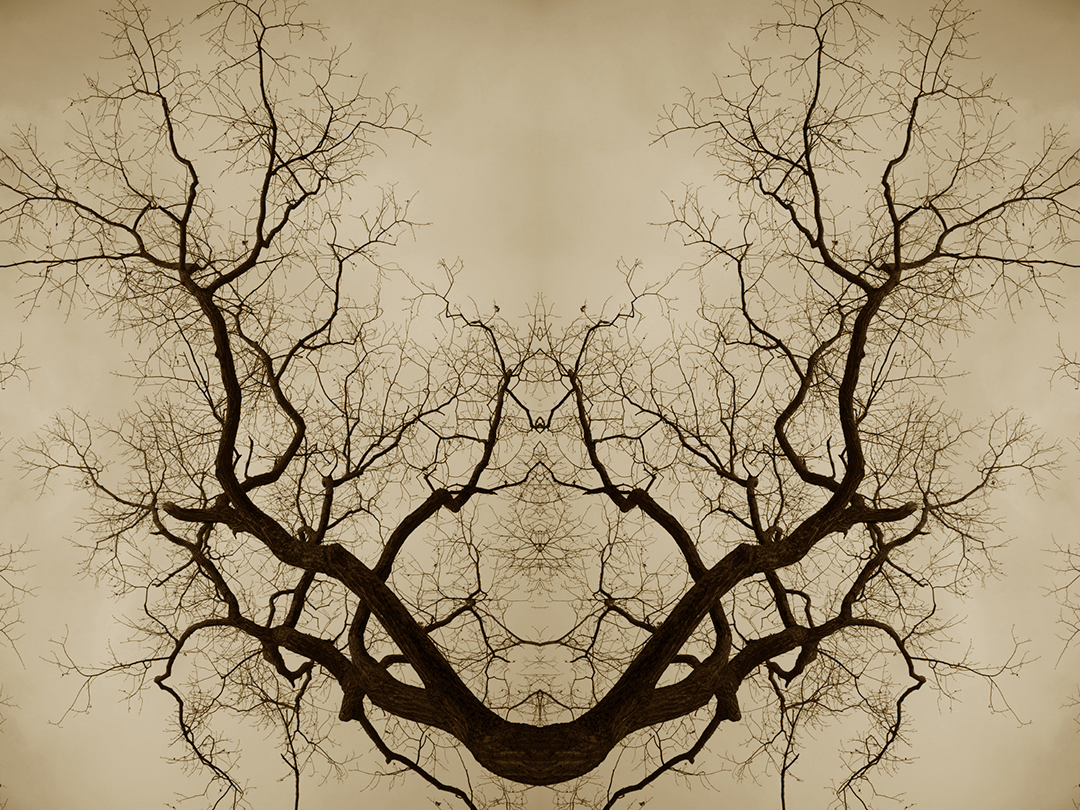
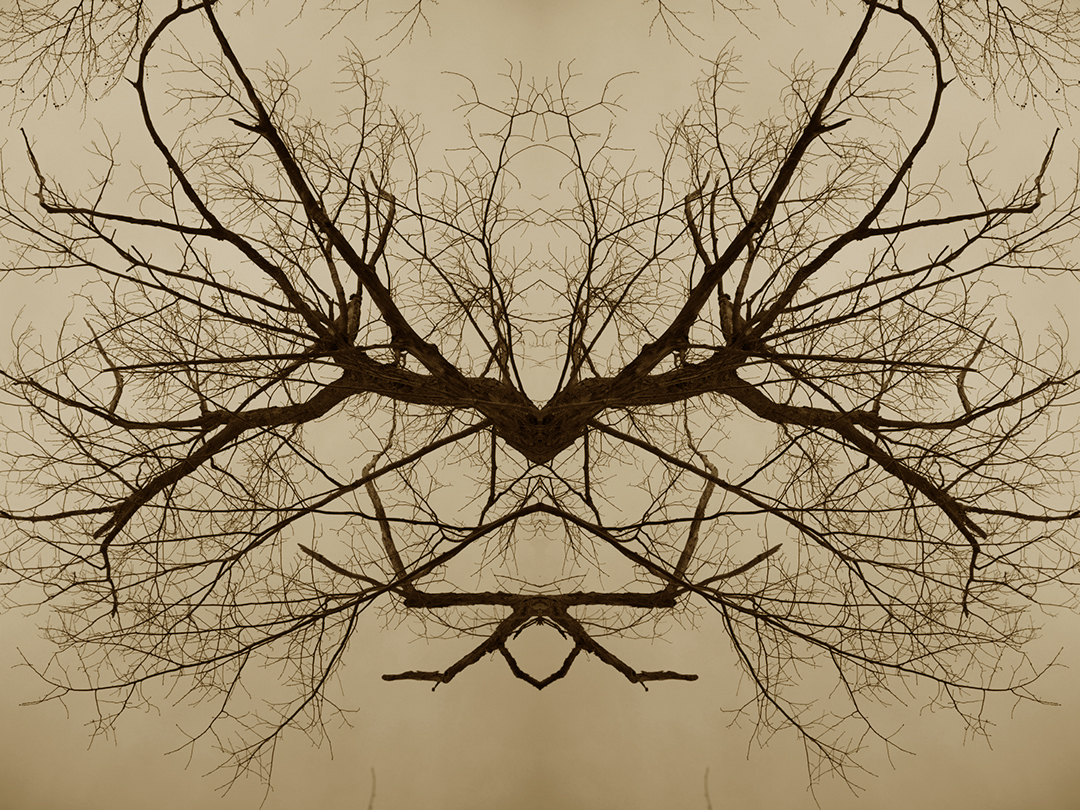
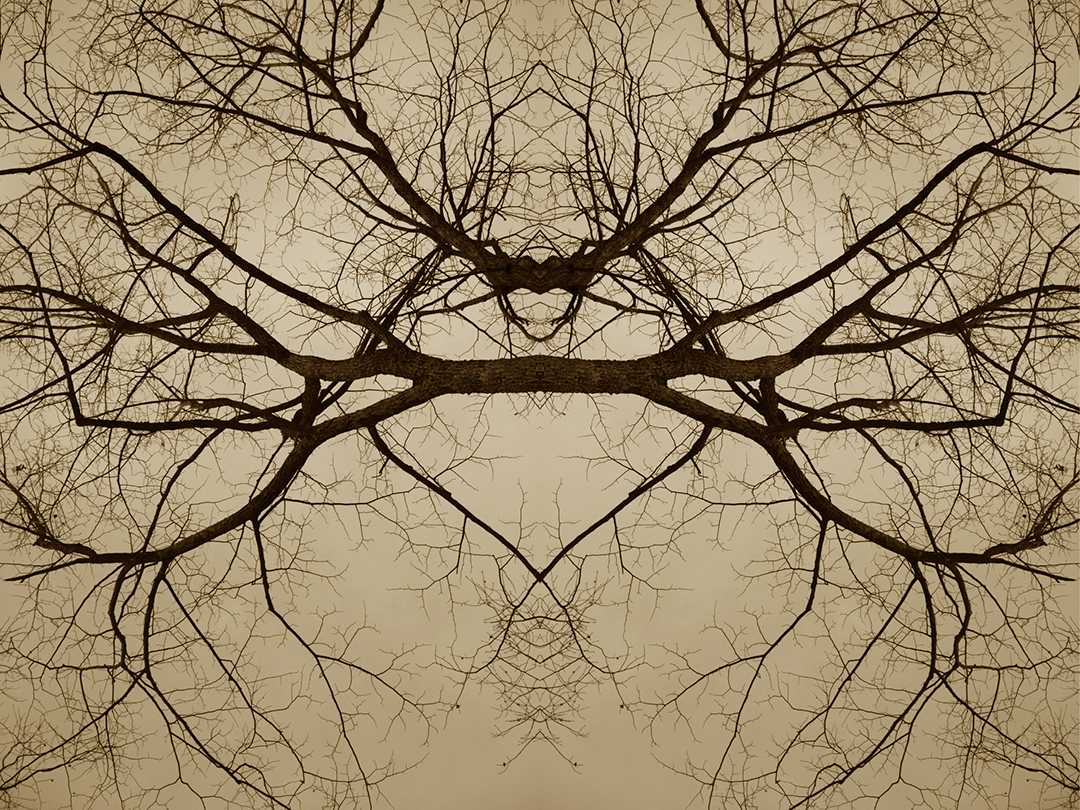



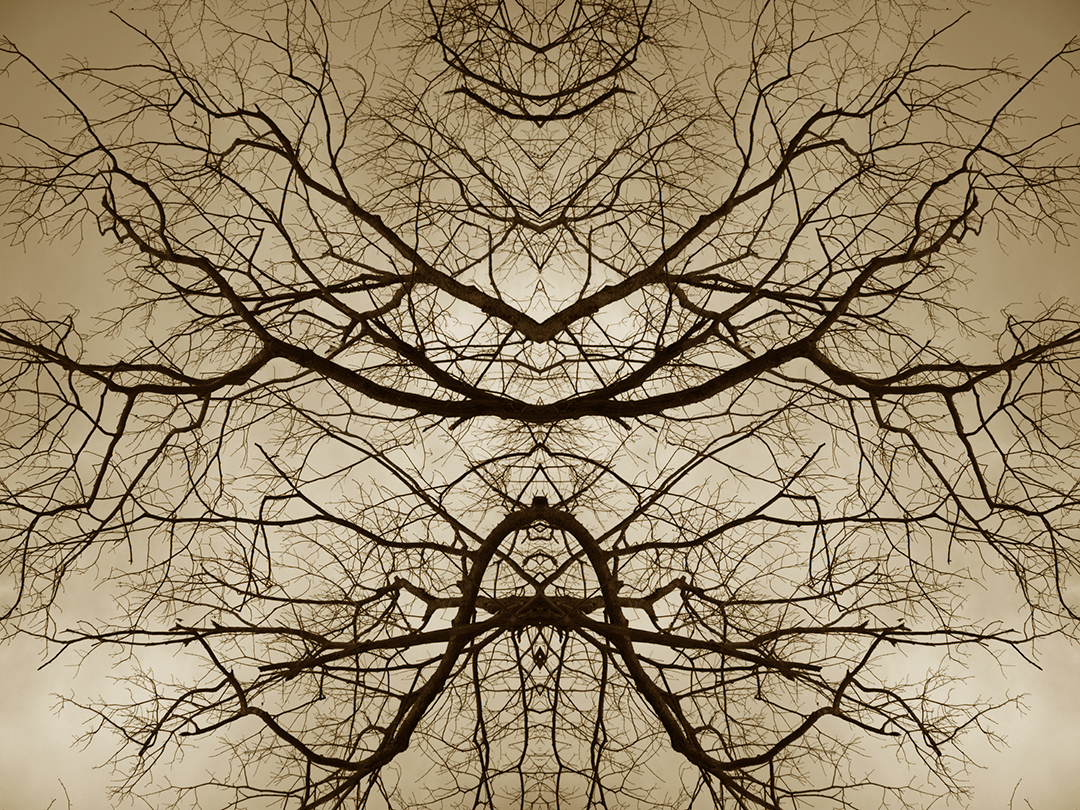



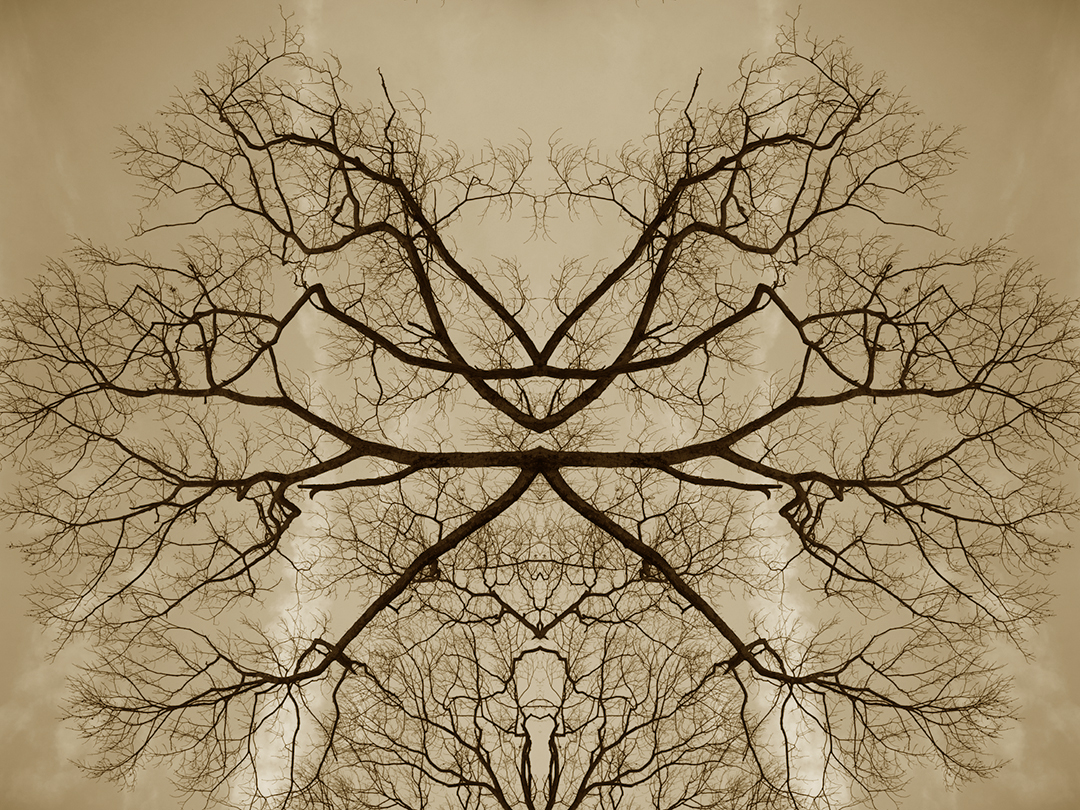

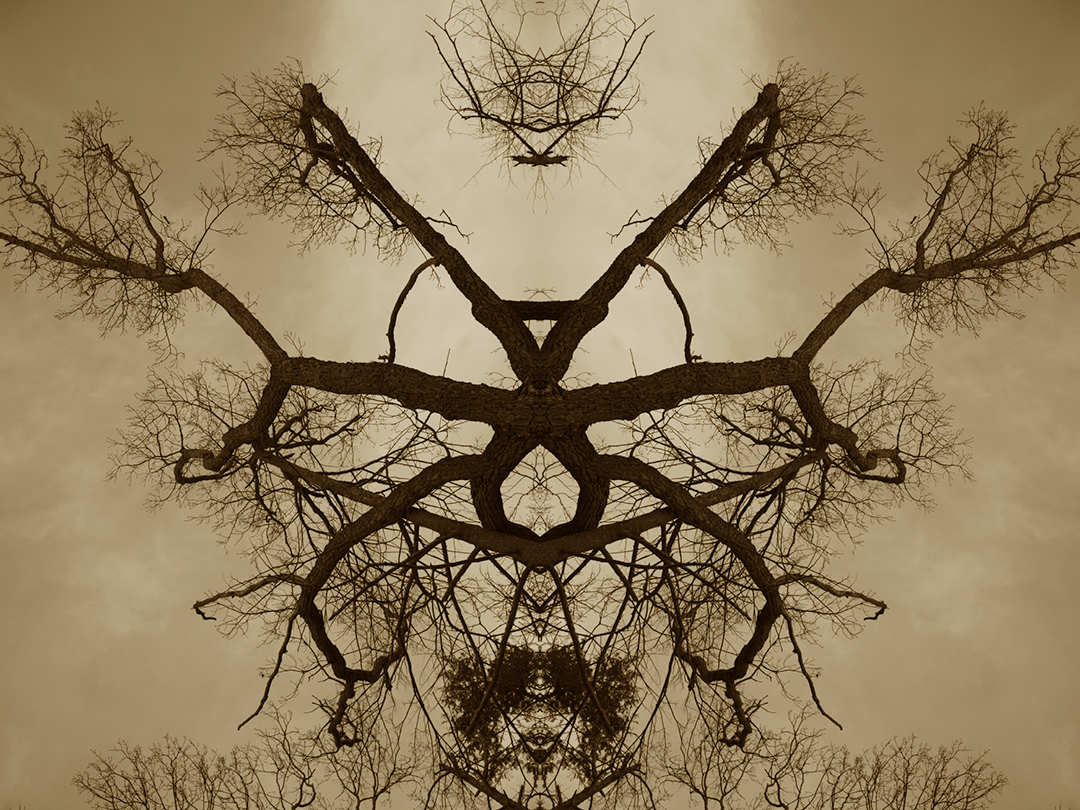



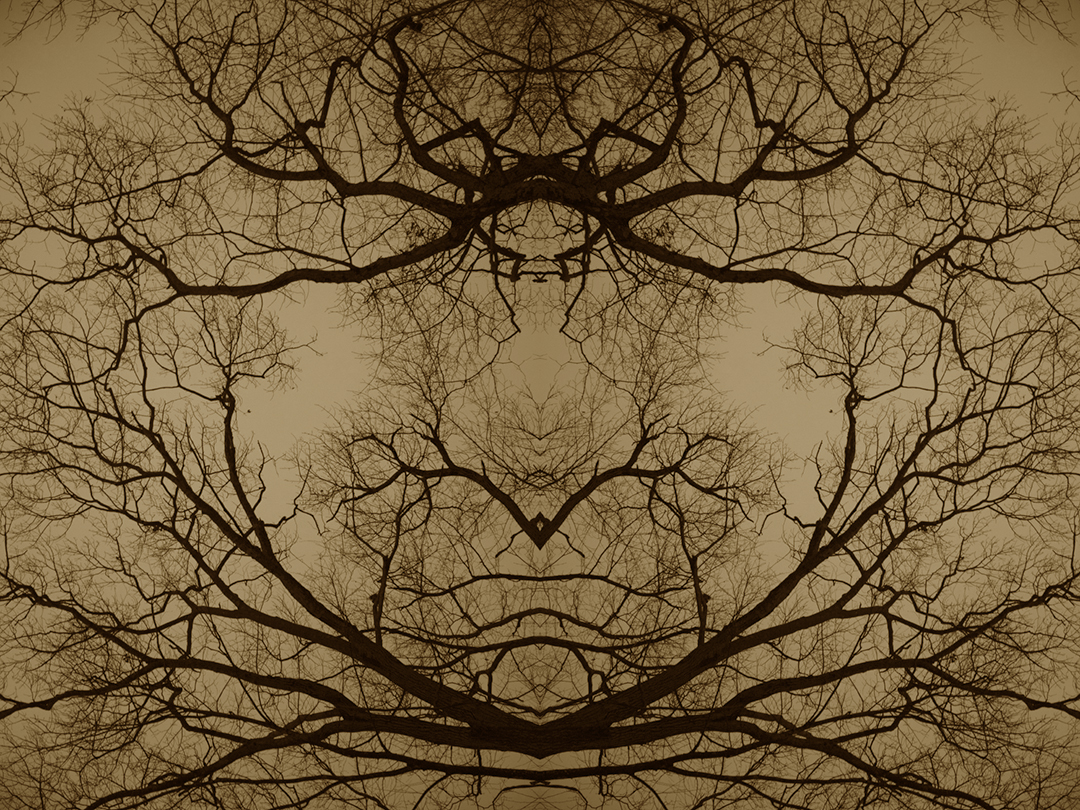
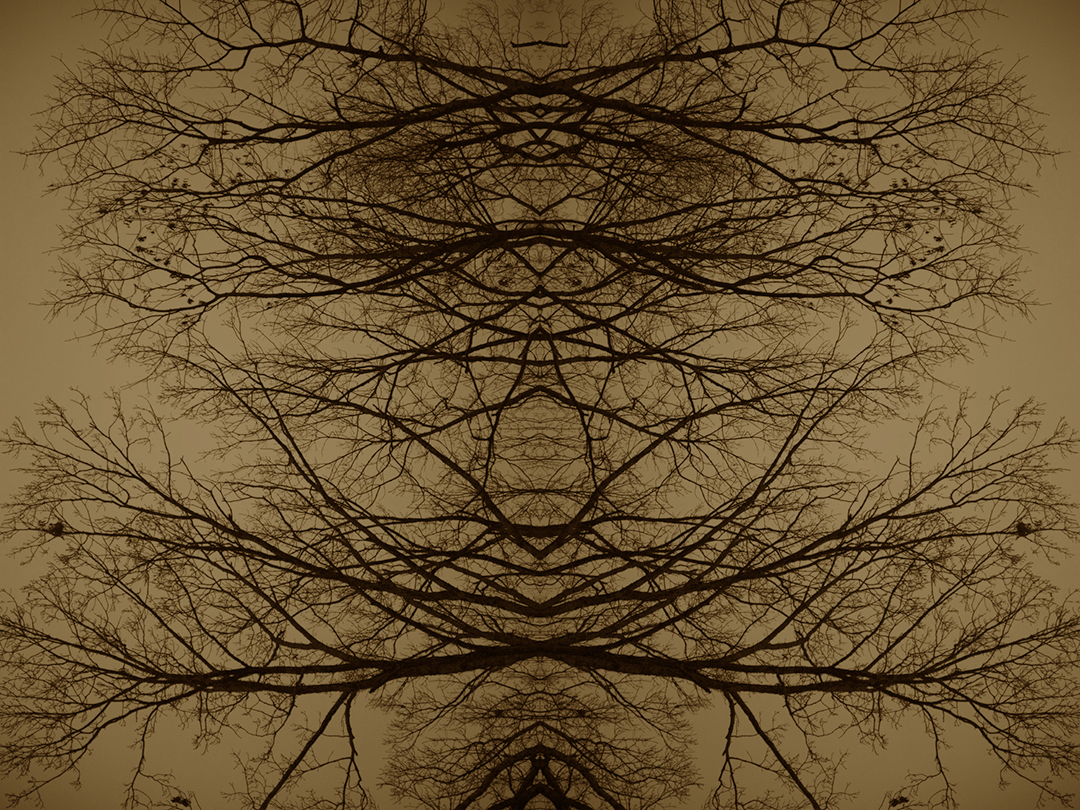
Selection from A Branching Heuristic, 2020.
A symbol is intentional, it intends something beyond and it stands for this something. Every symbol gives birth to meaning by means of interpretation. Interpretation is the work of thought, which consists in deciphering the hidden meaning within the apparent meaning. Symbol and interpretation are correlative concepts; there is interpretation wherever there are multiple meanings, and it is within interpretation that the plurality of meaning is made manifest. The purpose of interpretation is to conquer a remoteness, a distance between the symbol and the interpreter. By overcoming the distance, the interpreter can appropriate meaning to themselves: foreign, they make it familiar—they make it their own.
Trees, used symbolically, make concrete and material, the abstract notion of life—their roots within the earth, their leaves toward the sky—which they seem to unite, making possible the communication between two invisibles, above and below. As things, trees inhabit or create an uncanny space in which they seem sessile, passive, pliably responsive to human acts; and yet they carry on abundant lives of their own, with qualities and even varieties of affect remote to our experience. In their varying ways of taking up residence in proximity to humans, trees refract a myriad of possibilities; their forms suggest ways of organizing data—even knowledge about trees themselves may be found subsumed in tree-like diagrams.
Branching and reaching, trees express something ineffable: life is mysterious; it is not fully understood, it is never entirely interpreted, and it can never be essentialized. Only by forfeiting the detail can the all-over pattern be seen. What is sought is pattern, similarities rather than disjunctions, and speculation is the adhesive that binds the pieces together.
Trees, used symbolically, make concrete and material, the abstract notion of life—their roots within the earth, their leaves toward the sky—which they seem to unite, making possible the communication between two invisibles, above and below. As things, trees inhabit or create an uncanny space in which they seem sessile, passive, pliably responsive to human acts; and yet they carry on abundant lives of their own, with qualities and even varieties of affect remote to our experience. In their varying ways of taking up residence in proximity to humans, trees refract a myriad of possibilities; their forms suggest ways of organizing data—even knowledge about trees themselves may be found subsumed in tree-like diagrams.
Branching and reaching, trees express something ineffable: life is mysterious; it is not fully understood, it is never entirely interpreted, and it can never be essentialized. Only by forfeiting the detail can the all-over pattern be seen. What is sought is pattern, similarities rather than disjunctions, and speculation is the adhesive that binds the pieces together.